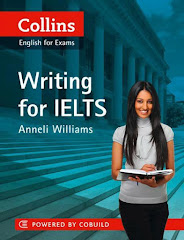>>Type 1 - Multiple Choice
 This type of question may be a question with three possible answers or the first half of a sentence with three possible sentence endings. You have to choose one correct answer, A, B or C, then write the correct letter on the answer sheet. Sometimes you are given a longer list of possible answers and you have to choose more than one answer. You should read the question carefully to check how many answers you need to choose.
This type of question may be a question with three possible answers or the first half of a sentence with three possible sentence endings. You have to choose one correct answer, A, B or C, then write the correct letter on the answer sheet. Sometimes you are given a longer list of possible answers and you have to choose more than one answer. You should read the question carefully to check how many answers you need to choose.
What skills are tested?
This type of question tests many listening skills, e.g. a detailed understanding of specific points, or general understanding of the main points of the recording
>>Type 2 – Matching
 In this type of question, you have to match a list of items from the recording to a list of options on the question paper, then write the correct letter on the answer sheet.
In this type of question, you have to match a list of items from the recording to a list of options on the question paper, then write the correct letter on the answer sheet.
What skills are tested?
This type of question tests your ability to:
- listen for detailed information. For example, whether you can understand information about the type of hotel or guest house accommodation in an everyday conversation
- follow a conversation between two people
- recognize how facts in the recording are connected to each other.
>>Type 3 – Plan/map/diagram labeling
- a diagram (e.g. a piece of equipment)
- a set of pictures
- a plan (e.g. of a building)
- a map (e.g. of part of a town).
You may have to:
- select your answers from a list on the question paper, then write the correct letter on the answer sheet
- select words from the recording which fit into gaps on the question paper. In this case, you will need to keep to the word limit given in the instructions. You do not have to change the words in the recording in any way.
What skills are tested?
This type of question tests your ability to understand, for example, a description of a place, and how this description relates to the visual. It may also test your ability to understand explanations of where things are and follow directions (e.g. straight on/through the far door).
>>Type 4 – Form/note/table/flow chart/summary completion
 In this type of question, you have to fill in gaps in an outline of part or all of the recording. The outline will focus on the main ideas/facts in the recording and may be:
In this type of question, you have to fill in gaps in an outline of part or all of the recording. The outline will focus on the main ideas/facts in the recording and may be:- a form: often used for facts, such as names
- a set of notes: used to summarize information and show how different points relate to one another
- a table: used to summarize information that can be divided into clear categories, e.g. place/time/price
- a flow chart: used to summarize the stages in a process, with the direction of the process shown by arrows.
What skills are tested?
This type of question focuses on the main points the person listening would naturally write down.
>>Type 5 – Sentence completion
 In this type of question, you have to read sentences that summarize important information from either all of the listening text or from one part of it. You have to fill in a gap in each sentence using information from the recording.
In this type of question, you have to read sentences that summarize important information from either all of the listening text or from one part of it. You have to fill in a gap in each sentence using information from the recording.
What skills are tested?
This type of question focuses on your ability to identify the important information in a recording. You may also need to understand relationships between ideas/facts/events, such as cause and effect.
>>Type 6 – Short-answer questions
 In this type of question, you have to read a question and write a short answer using information from the recording.
In this type of question, you have to read a question and write a short answer using information from the recording.
What skills are tested?
This type of question focuses on your ability to listen for facts, such as places, prices or times, heard in the recording.
Source: www.ielts.org










